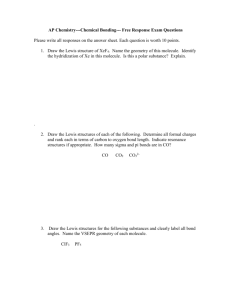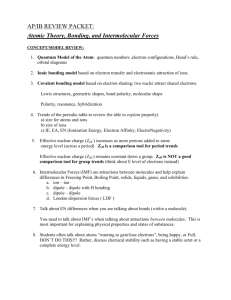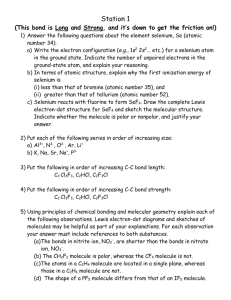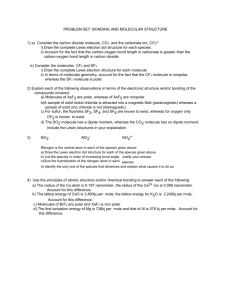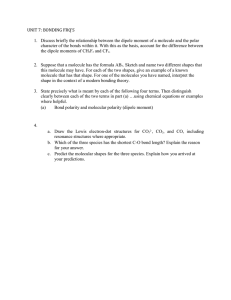AP Chemistry Review: Bonding & Molecular Structure
advertisement
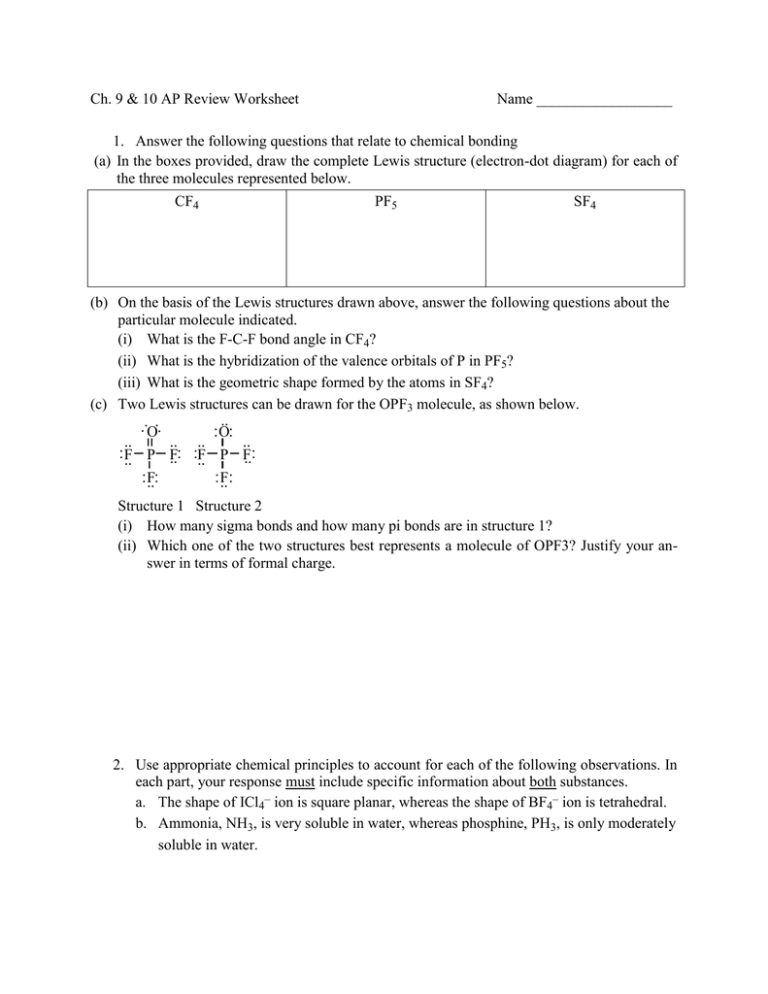
Ch. 9 & 10 AP Review Worksheet Name __________________ 1. Answer the following questions that relate to chemical bonding (a) In the boxes provided, draw the complete Lewis structure (electron-dot diagram) for each of the three molecules represented below. CF4 PF5 SF4 (b) On the basis of the Lewis structures drawn above, answer the following questions about the particular molecule indicated. (i) What is the F-C-F bond angle in CF4? (ii) What is the hybridization of the valence orbitals of P in PF5? (iii) What is the geometric shape formed by the atoms in SF4? (c) Two Lewis structures can be drawn for the OPF3 molecule, as shown below. : O: : O: .. .. .. .. :F ..: :F .. P F .. P F..: :F :F ..: .. : .. Structure 1 Structure 2 (i) How many sigma bonds and how many pi bonds are in structure 1? (ii) Which one of the two structures best represents a molecule of OPF3? Justify your answer in terms of formal charge. 2. Use appropriate chemical principles to account for each of the following observations. In each part, your response must include specific information about both substances. a. The shape of ICl4– ion is square planar, whereas the shape of BF4– ion is tetrahedral. b. Ammonia, NH3, is very soluble in water, whereas phosphine, PH3, is only moderately soluble in water. 3. Answer the following questions about the element selenium, Se (atomic number 34). (a) Samples of natural selenium contain six stable isotopes. In terms of atomic structure, explain what these isotopes have in common, and how they differ. (b) Write the complete electron configuration (e.g., 1s2 2s2... etc.) for a selenium atom in the ground state. Indicate the number of unpaired electrons in the ground-state atom, and explain your reasoning. (c) In terms of atomic structure, explain why the first ionization energy of selenium is (i) less than that of bromine (atomic number 35), and (ii) greater than that of tellurium (atomic number 52). (d) Selenium reacts with fluorine to form SeF4. Draw the complete Lewis electron-dot structure for SeF4 and sketch the molecular structure. Indicate whether the molecule is polar or nonpolar, and justify your answer. 4. Answer the following questions using principles of chemical bonding and molecular structure. (a) Consider the carbon dioxide molecule, CO2, and the carbonate ion, CO32–. (i) Draw the complete Lewis electron-dot structure for each species. (ii) Account for the fact at the carbon-oxygen bond length in CO32– is greater than the carbon-oxygen bond length in CO2. (b) Consider the molecules CF4 and SF4. (i) Draw the complete Lewis electron-dot structure for each molecule. (ii) In terms of molecular geometry, account for the fact that the CF4 molecule is nonpolar, whereas the SF4 molecule is polar.
